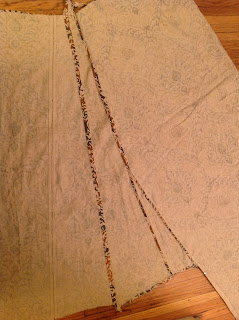
I then flipped the facing fabric back toward the outer edge and ran a row of running stitch through the inner layers over the original seam securing the skirt and facing together.

Flipping the facing back again I have the look want, a separate tiny band of facing fabric sandwiched into the seam, and also enough stiffening from the build-up of the successive folded layers that I decided I didn't need to add any cording.

I double folded the remaining facing fabric and positioned it so the leading edge of the four thicknesses buts into the edge of the encased hem. Stitched in place, clipped, ironed, Voila!























